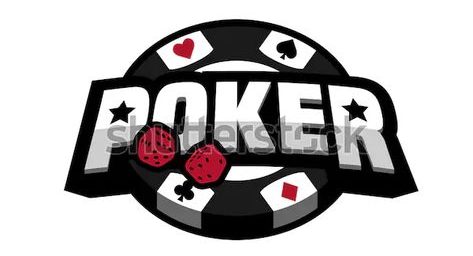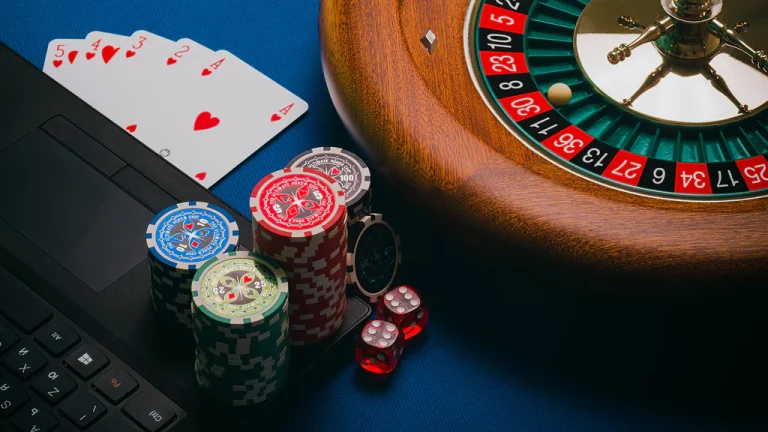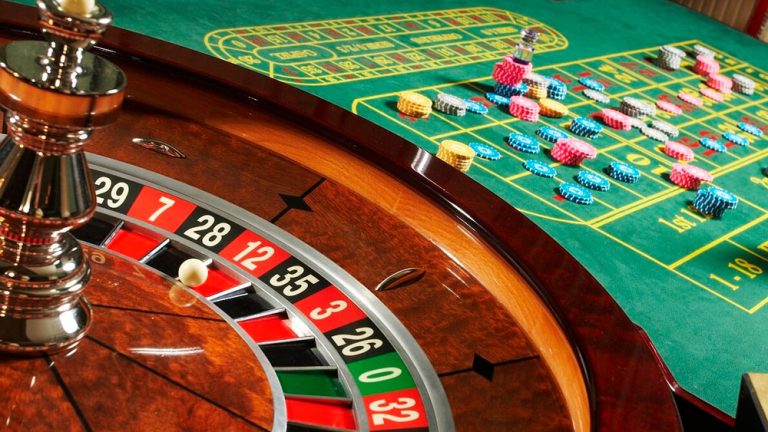When Loss Feels Like a Signal to Go Faster
Everyone knows the old advice: take a breath, step away, close the session. Yet many players report the opposite impulse right after a loss: speed up, raise stakes, reclaim the night. The paradox is striking – and human. When something hurts, arousal can feel like relief; when control slips, action feels like medicine. Whether you play at a live table, on mobile after work, or while browsing new lobbies you first encountered via https://5gringos5.gr/, the post-loss pull toward risk is a recognizable pattern. This article is written from the industry side with unusual candor: what the body and brain are doing, how interface choices can amplify or soothe, why identity and culture matter – and what actually helps in the moment.
The Pain-Relief Paradox: Why Risk Can Feel Like Numbing
Loss hurts – physically, not just metaphorically. The brain’s pain circuits don’t neatly separate social loss (money, status, self-story) from physical discomfort. Here’s the twist: arousal can mask pain. Heightened focus, faster breathing, and goal-directed action create a temporary analgesia – players often mistake that for “clarity” or “momentum.” In reality, it’s numbing: you feel less, so you do more.
- Acute distraction: Risk provides a strong, simple target – press, spin, decide – pushing complex feelings offstage.
- Agency illusion: Choosing aggressively feels like regaining control, even when odds haven’t changed.
- Time compression: Flow shrinks minutes; if you don’t feel time, you don’t feel loss – until later.
Seen this way, chasing is less a math error than a regulation strategy that “works” for a few minutes and then works against you.
The Body’s Side of the Story: What Happens After a Loss
Neurochemical swing
- Dopamine: Anticipation spikes before outcomes; after a loss the drop is stark. “One more” promises to lift anticipation again.
- Norepinephrine (alertness): Rises with stress, sharpening focus but narrowing options – you see the button, not the plan.
- Endogenous opioids & the pain-offset phenomenon: Relief itself can feel rewarding; players try to recreate relief rather than profit.
Somatic markers
- Tight jaw, shallow breathing, hunched shoulders, faster tapping – small tells of a “hot” state. In hot states, people prefer speed over accuracy and action over reflection. Recognizing the body is the earliest chance to cool the mind.
Cognition Under Heat: The Bias Stack That Follows Loss
- Loss aversion: A €50 loss hurts more than a €50 gain pleases; the mind seeks relief, not rationality.
- Sunk-cost pull: “I’ve already invested this time/money – stopping now makes the loss ‘real’.”
- House-money effect: Earlier wins feel less “yours,” so risking them seems painless – even when they’re gone.
- Moving reference points: You promised to quit at –€100; now –€150 is the “real” line. Targets migrate under heat.
- Near-miss mislabeling: A loss that looks close is still a loss; treating it as a signal compresses time and inflates risk.
Individually, each bias is manageable. Together, right after a sting, they behave like a tailwind toward more risk.
Numbing vs. Soothing: Two Very Different Repairs
- Numbing reduces sensation quickly (speed, bigger stakes, auto-play). It’s fast, cheap, and costly later.
- Soothing reduces distress sustainably (breath, pause, smaller stake, exit ritual). It’s slower, and it sticks.
A simple litmus test: Does this make the next decision easier to make well? If not, it’s numbing.
The Redemption Arc: Why “Make It Right” Makes It Worse
Players often narrate a redemption story post-loss: “I’ll get back to even; then I’ll stop.” It feels moral – “I fix my mistakes.” Trouble is, randomness doesn’t care about redemption. When the story is honor, honor demands a finale – which pushes you further than math, mood, or time intended.
A healthier script: “I honor my plan, not my pain.” That preserves dignity without gambling for absolution.
Identity, Pride, and Privacy
Loss threatens identity: the cool strategist, the careful provider, the lucky friend. Many players would rather hide than adjust – privacy protects pride but can also protect drift. Two identity moves work better:
- Persona pick at start: Strategist / Explorer / Socialite / Tourist. Play to the persona, not to feelings.
- Win/loss is not worth: Tie self-respect to keeping the plan, not to session outcomes.
End with a line you can be proud of: “I ended on time, within budget, with breath.”
Design and Context: How Interfaces Can Help or Hurt After Losses
Elements that can amplify heat
- Turbo spins and auto-play right after a miss: speed is numbing in disguise.
- Excessive near-miss theater: Warm colors, long slowdowns, triumphant stings for a loss-adjacent event blur categories.
- Credits-only displays: Abstract numbers feel less real; house-money illusions flourish.
Elements that cool the state
- Dual economy display: Credits and currency side by side – value becomes concrete.
- Proportionate fanfare: Big color and longer audio reserved for real wins; near-miss cues cool and brief.
- Natural intermissions: Post-feature breath points (“Bank now?”, “Take a moment?”) make stopping a designed action, not a buzzkill.
- Stake-up friction: One elegant confirm after losses slows reflex escalation.
Good UX doesn’t preach; it creates breathing room.
Culture and Silence: Why We Talk About Wins, Not Pain
Highlight-reel culture rewards spikes and hides variance. Masculinity norms, influencer editing, and polite avoidance of money talk all make losses invisible. The quiet has benefits (fewer opinions, less shame), but it also removes mirrors. A simple compromise: one trusted witness – a friend or notebook – who sees the real numbers. Privacy intact, distortion reduced.
Night Mode and Time Drift
Late-night play reduces interruptions and deepens immersion. That’s pleasant – and risky after losses:
- Circadian low: Evaluative control drops; rituals take over.
- Compressed minutes: Flow makes “five more” turn into forty-five.
- Muted highs: Fatigue blunts joy; you seek more peaks to feel the peak.
If you play at night, shrink sessions and volatility, and never run back-to-back “revenge” chapters.
Case Vignettes (Composite, Realistic)
The Builder’s Spiral
D., 39, contractor. Down €140 after a clean plan, he shifts to turbo and bigger bets. Ten minutes later he’s at –€320 and barely remembers the intervening spins. He adopts: dual display on; stake-up breath (inhale 4, exhale 6) mandatory; event-linked exits only (first feature after minute 35 = stop).
The Night Nurse’s Repair
M., 33, ICU nurse. Post-loss she feels the urge to “clean the record.” She writes a one-sentence contract before play: “Tourist mode, 30 minutes, exit on +€60/–€60 or first feature after minute 20.” After a –€60 hit she ends, screenshots, writes “–€60 calm,” and sleeps. The ledger becomes pride, not proof.
The Streamer’s Double Life
K., 28, creator. Off-camera he chases to avoid posting a losing day. He reforms by narrating endings, not just entries: declares exits on stream, shows net summary, and models the curtain call: withdraw → music sting → chat goodnights.
The Player’s Cool-State Toolkit (That Still Feels Like Play)
- One-sentence plan (before you start):
“Explorer mode, 45 minutes, entertainment €X; exit on +€Y/–€Z or first feature after minute 30.”
You’ve created chapters and a finale. - Persona pick:
Strategist / Explorer / Socialite / Tourist. Check every 10–15 minutes: “Am I still in character?” - Stake-up breath:
4-in, 6-out before any stake increase – especially after a loss. If the urge survives a full exhale, it’s a choice, not a reflex. - Dual display on:
Credits + currency visible. Phantom money shrinks; ownership rises. - Event-linked exits:
- First feature after minute X
- Second clear peak of the session
- Two near-misses in a row post-loss → pause/stop
Events are harder to renegotiate than feelings.
- Win/Loss ritual (10 seconds):
Mute → inhale → exhale → screenshot → bank (or stop) → one tag (“calm,” “rushed”). You’re training memory, not just making money. - Night rules:
Shorter sessions after 22:00, lower volatility, never chain a “revenge” session to another. - Weekly three-number audit:
Hours, Net, Max drawdown. If drawdown > comfort, auto-reduce stakes by 25% next week.
“In-the-Moment” De-Escalators (When You’re Already Hot)
- Name the state: “I’m hot.” Labeling reduces intensity.
- Change the posture: Feet flat, shoulders down. Physiology informs psychology.
- Switch the metric: From “back to even” to “end on plan.”
- Enforce a micro-break: 90 seconds, eyes off the screen, one glass of water.
- Shrink the canvas: Drop stakes or volatility immediately; if that feels intolerable, stop.
- Externalize choice: Text a trusted buddy: “Down €__, ending on [trigger].” Witness flips pride from chasing to stopping.
Operator & Designer Playbook: Ethical Ways to Help After Losses
- Proportionate feedback: Reserve deep golds and long animations for true wins; keep near-miss cues cool, brief, and unambiguous.
- Reality cues the player controls: Minute or loop-based reminders in the player’s own words (“Strategist mode – remind me at 40m”).
- Stake-up dwell: A graceful half-second confirm after losses diffuses reflex.
- Dual-economy default: Credits and currency side by side, not buried in settings.
- Easy exits: One-tap withdraw and celebratory “end well” UI affordances – exits deserve fanfare, too.
- Exportable ledgers: Frictionless records let players audit privately.
This isn’t anti-engagement; it builds long-term trust.
Myths We Should Retire
- “Chasing proves resilience.”
Resilience is honoring your plan under pressure, not raising stakes under pain. - “A bigger stake will ‘wake me up.’”
It numbs you. Clarity comes from breath, pause, and boundaries. - “I can feel a recovery coming.”
Variance has no memory. What you can feel is arousal. - “Quitting after a loss is weak.”
It’s skill. Ending well is the hardest move in gambling.
Micro-Experiments to Run Tonight
- Grayscale test (5 minutes):
Toggle grayscale on your device. If urges fade, color was carrying engagement – choose calmer palettes. - Near-miss naming (10 times):
Each near-miss: say “loss.” Watch urges become choices. - Two-peak rule (one session):
Commit to ending on the second clear positive peak. Stopping will feel like completing a pattern, not cutting one short. - Stake-change gate:
Any stake change requires a full 10-second count with your finger off the button. If that’s intolerable, the state – not the strategy – is the issue. - Ledger snapshot:
Write today’s net from memory; then check actuals. Note the gap – that’s your hot-state distortion. Close it with tags and screenshots.
Frequently Asked Questions
Is seeking risk after a loss irrational?
It’s human. Your body is trying to regulate pain with arousal. Recognizing that turns “irrational” into “manageable.”
Does tightening rules kill the fun?
Good rules sharpen color. Chapters and finales make sessions more memorable, not less.
How big should my loss limit be?
Price it as entertainment: an amount you’d spend on an evening out, pre-decided, not expandable under heat.
What if I always feel I left money on the table?
That’s future-regret fear. Replace it with present-pride evidence: screenshot, vault/withdraw, one-line note. Train your memory to love endings.
A Compact Checklist (Clip-and-Keep)
- One-sentence plan (role + time + exits)
- Dual display on (credits & currency)
- Stake-up breath (4-in, 6-out)
- Event-linked exits (feature/peak/minute)
- Win/Loss 10-second ritual + tag
- Night rules (shorter, softer, no sequels)
- Weekly three-number audit
- One trusted witness (optional, powerful)
Responsible Play, Always
Gambling is entertainment – not a tool to solve financial or emotional pain. If you find yourself hiding sessions, chasing repeatedly, borrowing to play, or missing obligations, take a structured break. Use time-outs, lower limits, or self-exclusion tools, and consider professional support available in your region. The best story is the one you can re-tell with pride.
Conclusion – Turning Pain Into a Plan (Not a Pursuit)
After a loss, your nervous system wants relief; your story wants redemption; your culture urges highlights; some interfaces offer speed. Put together, they make risk feel like anesthesia. The antidote is not shame; it’s structure that respects emotion: prepare a persona and a plan, breathe at the hinge moments, let events – not urges – decide exits, and design a curtain call worth remembering. Operators can support this by building spaces where ending well is as celebrated as winning.
When pain whispers “faster,” answer with a plan that speaks softly but clearly. The win isn’t erasing the loss; it’s reclaiming authorship over the next minute.




